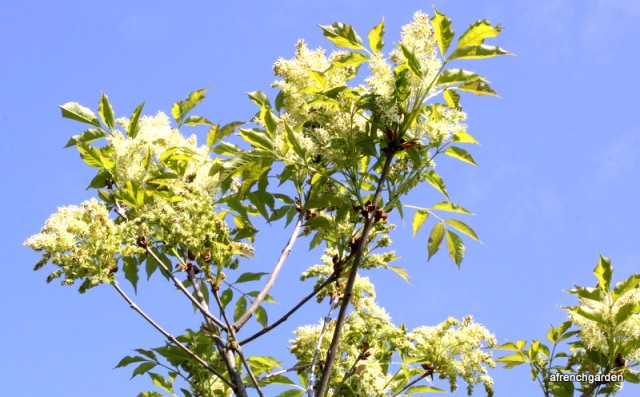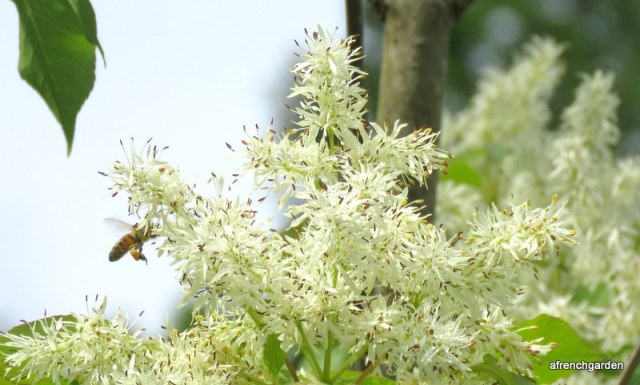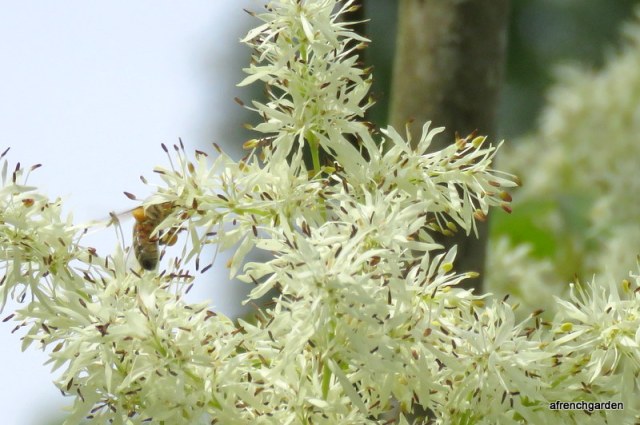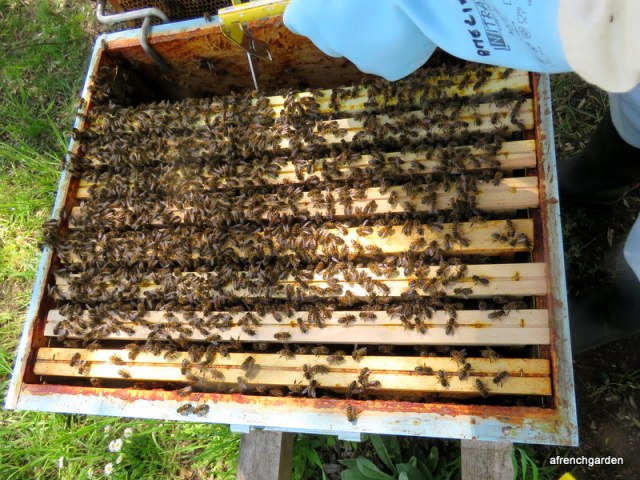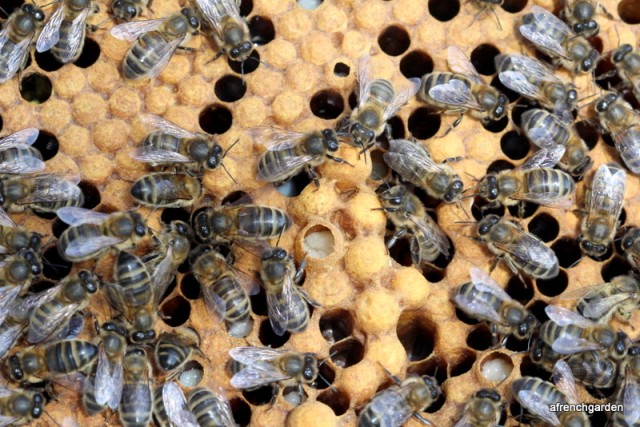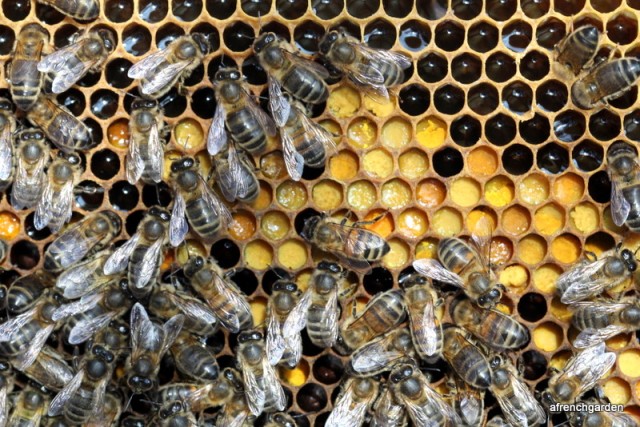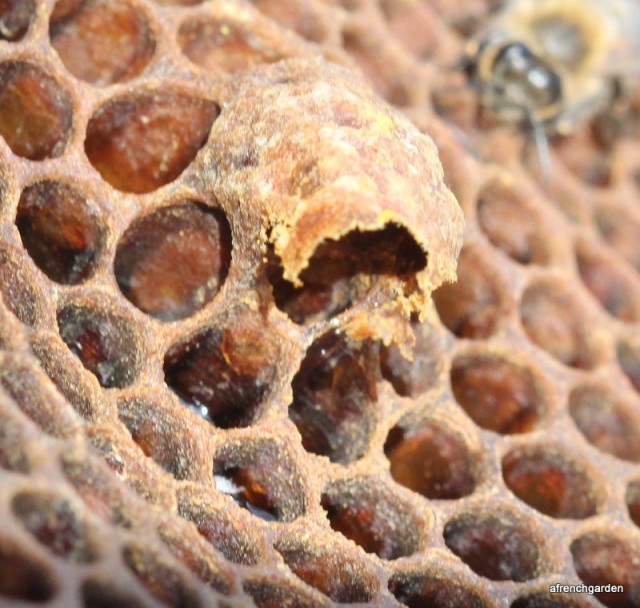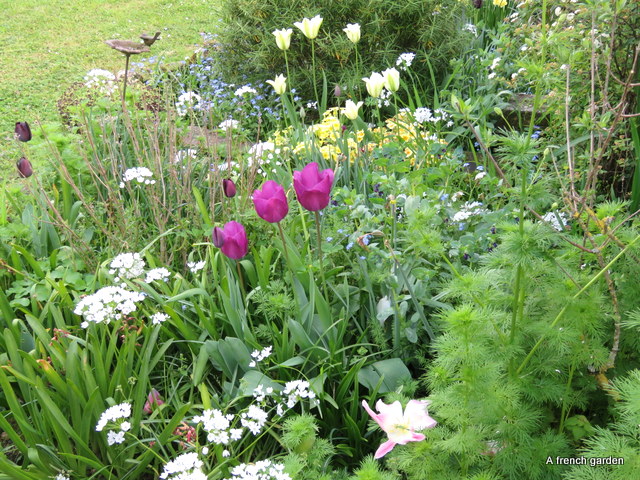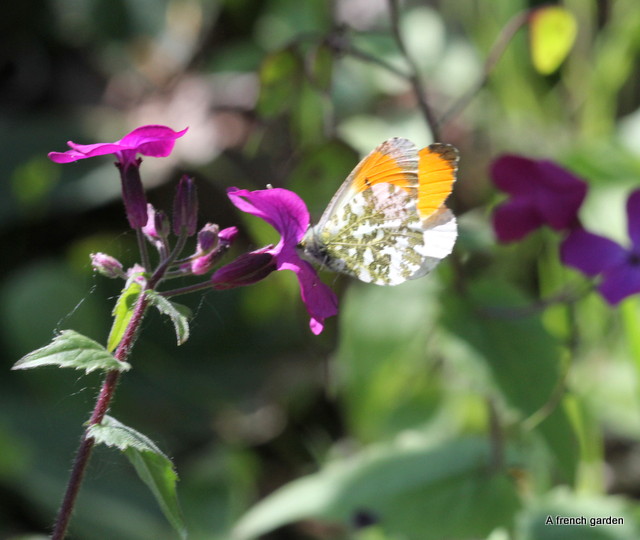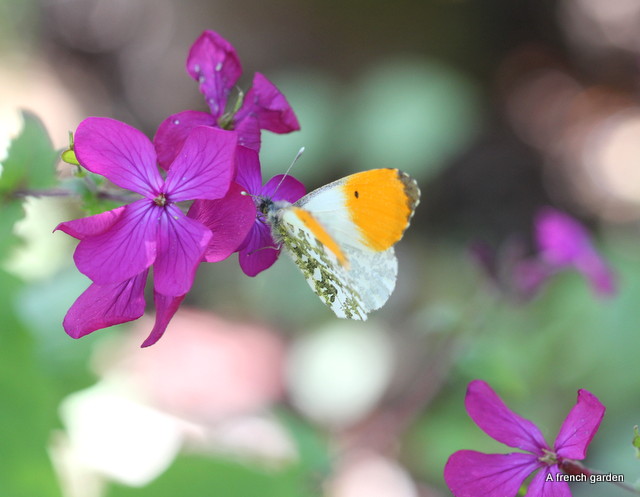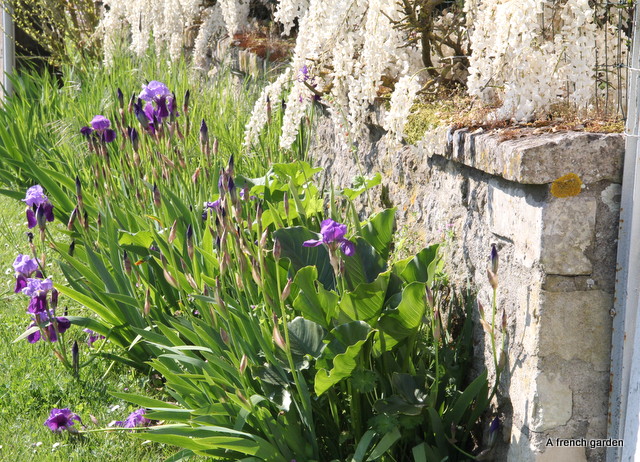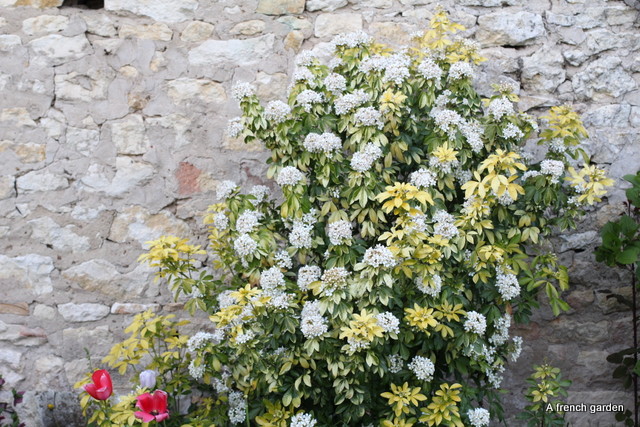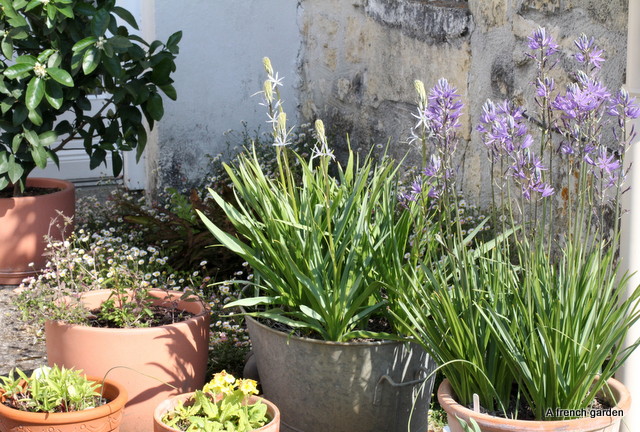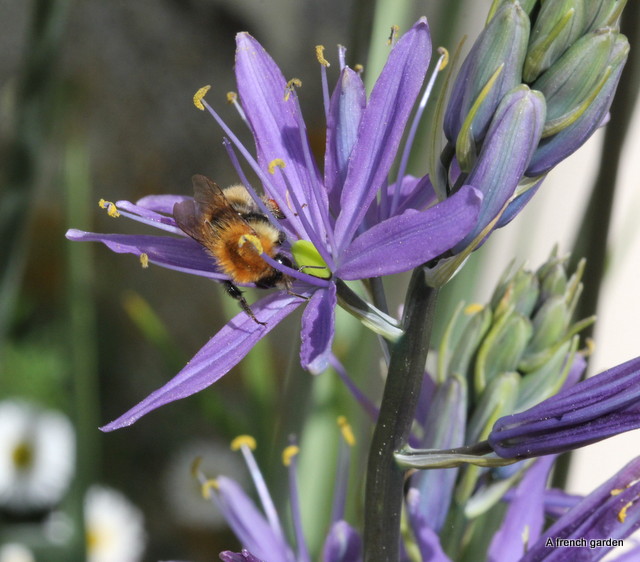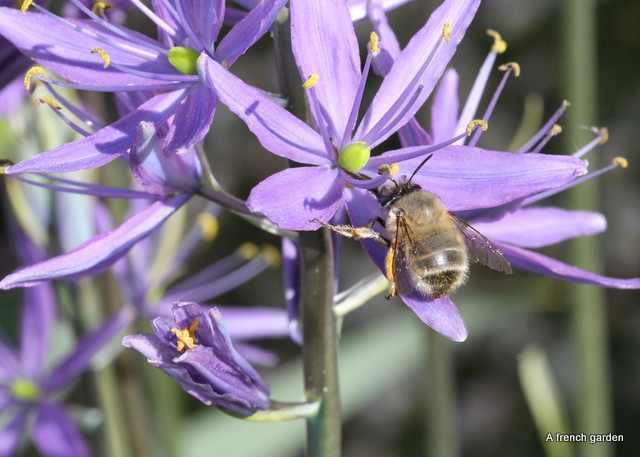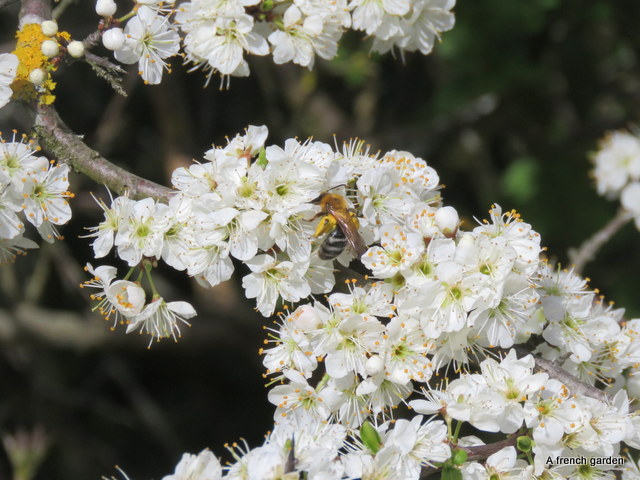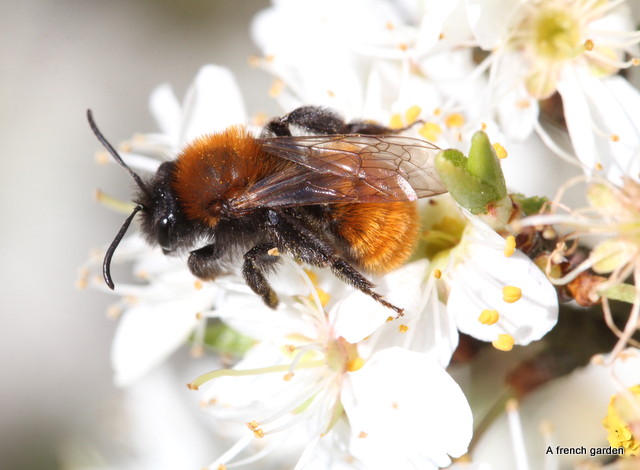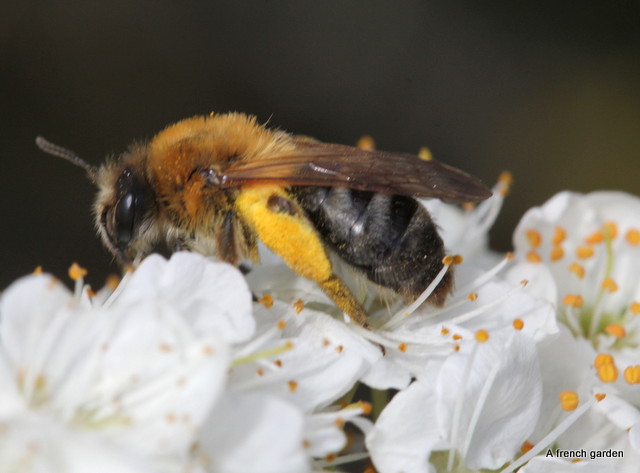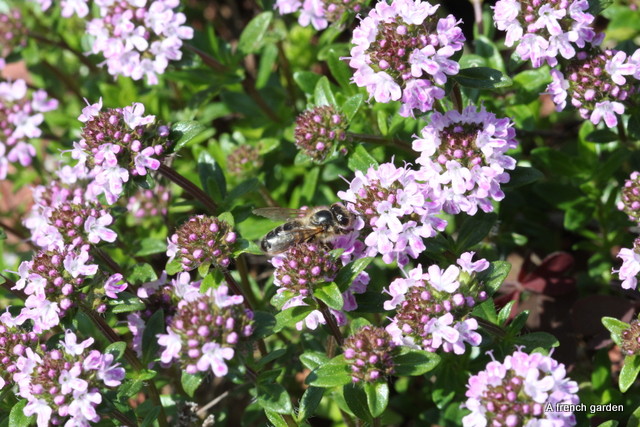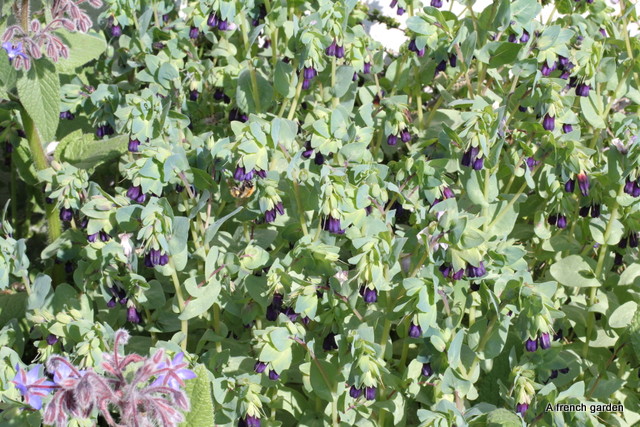Well, at last the Spring is here (I think!). I know that because it is now two weeks since we started hearing the Cuckoo. It is also because the birds have started pairing and courting.
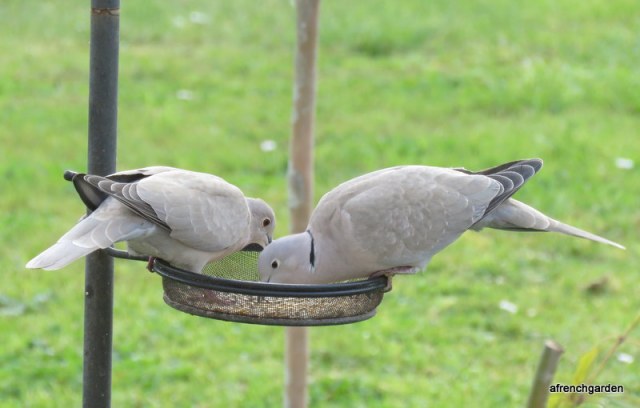
And… our tortoises have eventually come out of hibernation.
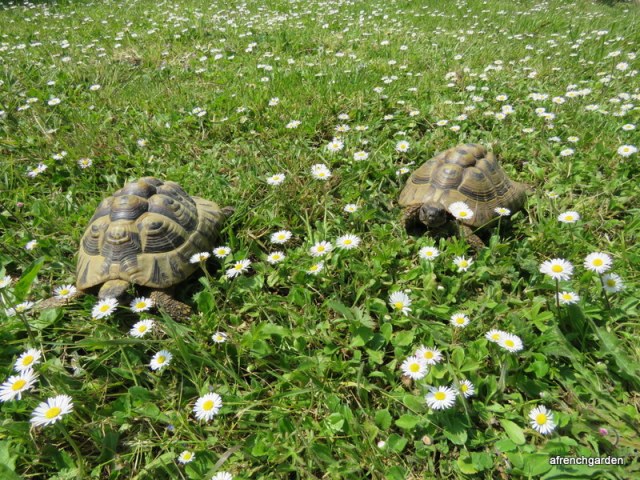
The birds we rarely see in the garden in winter, including the green finch
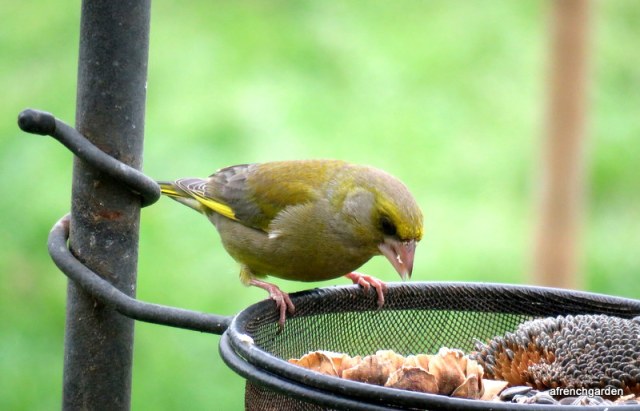
and the green woodpecker, have returned.
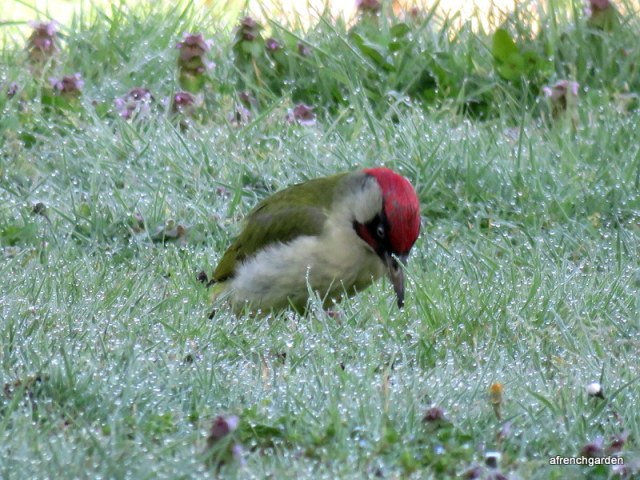
As for our bee hives, unfortunately we lost one of our bee colonies – Iris – to the Asian hornets last November. The hornets don’t just destroy the colonies, but weaken them in autumn at exactly the time that the colonies need to produce the winter bees to keep them warm and stock up with provisions for the winter. So perhaps Iris was not a strong enough queen to keep up producing enough young to replace the losses.
But we were very lucky. In this region of France, the Charente-Maritime – many bee keepers have lost large numbers of hives this past year – on average more than 50%. One beekeeper friend near us lost 10 out of a total of ten hives. Another has lost six out of seven hives. So we have taken it upon ourselves to give a helping hand to our friends.
The bees maintain a temperature inside their hive of over 30 degrees centigrade, In February the outside temperature is still low to inspect the interior of the hives, but one can get a very good idea by just observing their coming and going. If they bring in pollen that is a sure sign that they have brood and need to feed the young. So by clicking on the link (1 min 07 sec.), I invite you to see what the entrance of one of our hives looked like on 16th February with outside temperature of 7-8 degrees centigrade. You can also notice three different colours of pollen brought in by the bees.
Strangely, now that the weather has improved the bees do not come out until it warms up to over 10 degrees centigrade.
Our other four hives have survived the winter and emerged as strong colonies, and the inspection in March showed that they have strong broods on three or even four frames in March.
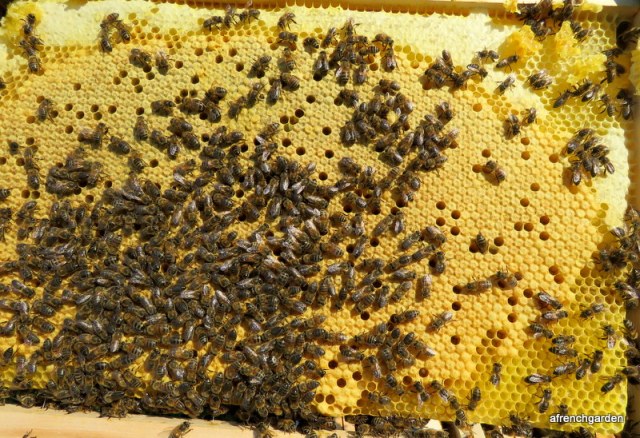
At the end of March we decided to divide two colonies – Pissenlit (Dandelion) and also Tournesol (Sunflower) – These were our two strongest colonies.
The division of a hive is in theory to expand the number of colonies and also to prevent the almost annual swarming of a hive – although we have found that when the swarm fever sets in a colony, nothing will prevent them from swarming.
One can remove a brood frame with a queen cell, if it is observed, and make a new colony, or one can remove a frame without the queen or queen cell, but containing fresh eggs, and hope that the colony will make their own new queen.
In both hives we found the queen and removed the frame with the queen. We decided to give away our queens plus two frames of broods and plenty of bees. Our friends are naturally delighted and the bees are expanding at a fast rate. This means that we have now two orphan colonies. We hope that they will make new queens. So like expectant parents we just keep our fingers crossed.
We have meanwhile placed a six-frame beehive above the old hen-house to attract any passing swarm. During the last few years we have caught a number of swarms there.
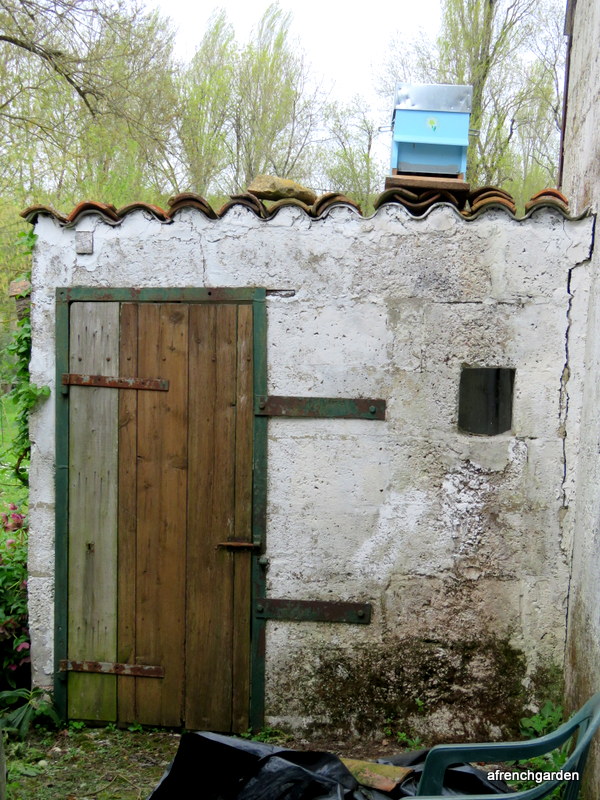
The scouts bees have already started coming each day. So we wait and see what happens this year.
There is plenty of flowering shrubs and flowering fruit trees at the moment for the bees. This little lady has been taking pollen from the Camellia
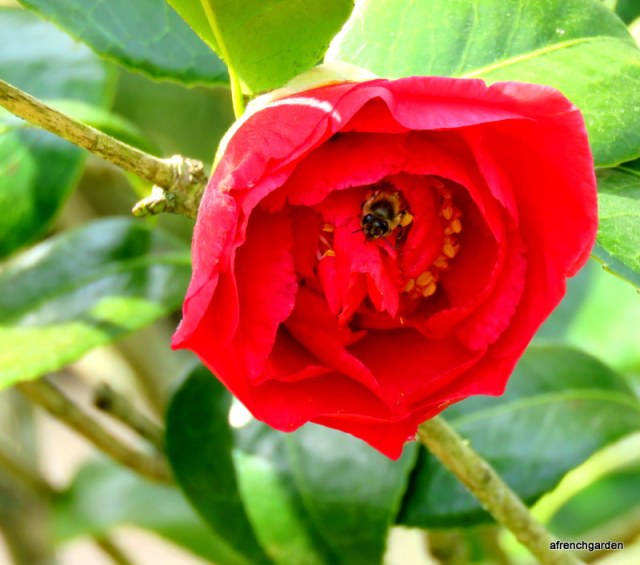
She emerged laden with pollen.
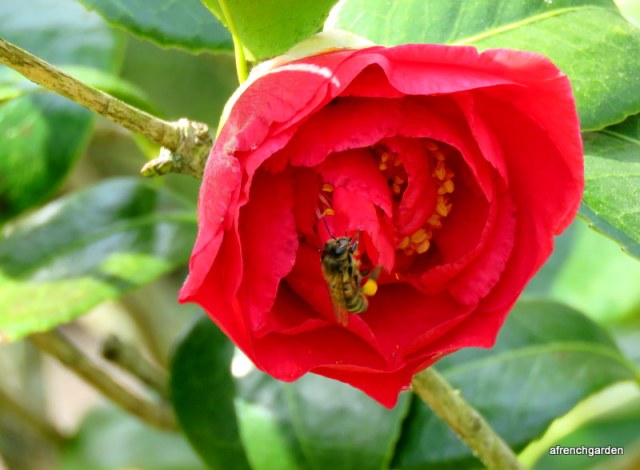
Meanwhile on Sunday 31st March, whilst entertaining an old friend for lunch a large swam arrived on the quince tree at about one pm.
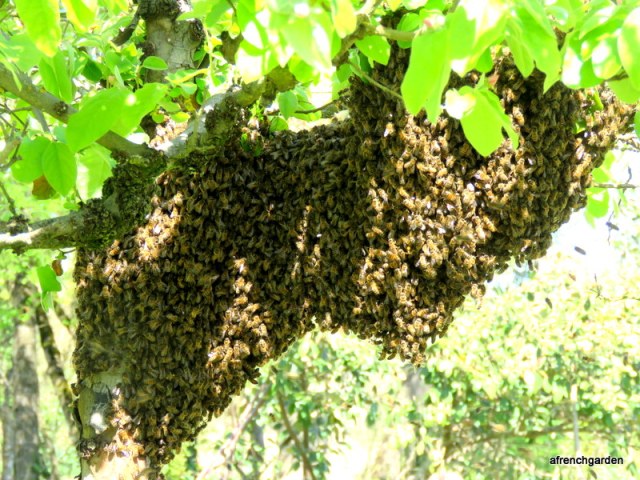
All thought of lunch was put aside as Amelia and I rushed to put on our bee suits.
We placed a sheet under the quince tree which is full of blossoms. I shook the lowest branch vigorously and caught the swarm directly in Iris’s old hive and left her there until the evening to let them settle in. As the queen was now inside, the rest of the bees you can see below on the outside of the hive just marched inside. They were really gentle and the operation was very smooth.
This is the first time we have put a swarm directly into a full sized hive, previously we have used the smaller 6 frame hive to collect swarms. As this was a large swarm we feel it was a good choice.
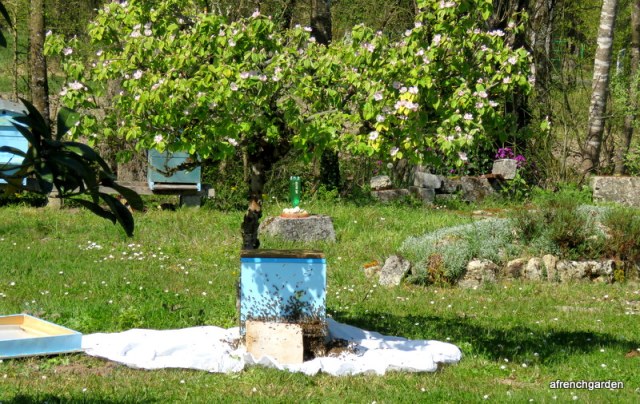
Quite a few of the bees in the swarm were carrying pollen, which I thought was unusual. Then on Monday morning at about 9 am I saw the new hive was bringing in pollen. Again strange as I had placed undrawn wax sheet on the frames and surely, I thought, the bees have not had the time to draw it in order to stock the pollen. Oh, well, I guess they know what they are doing! I hope that a more experienced person can give me an explanation.
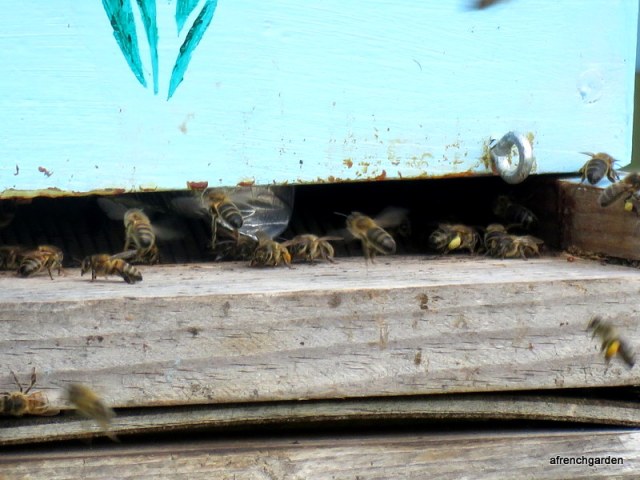
So here we are with a garden full of flowers and blossom and our now five hives. I hope that the two orphan hives will do their job. But that is hopefully for another update in the future.
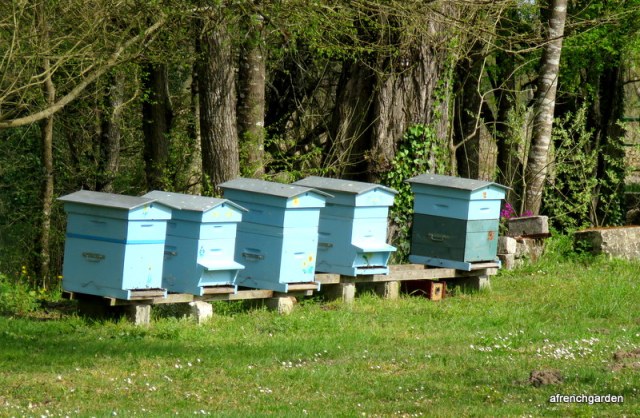
Kourosh


